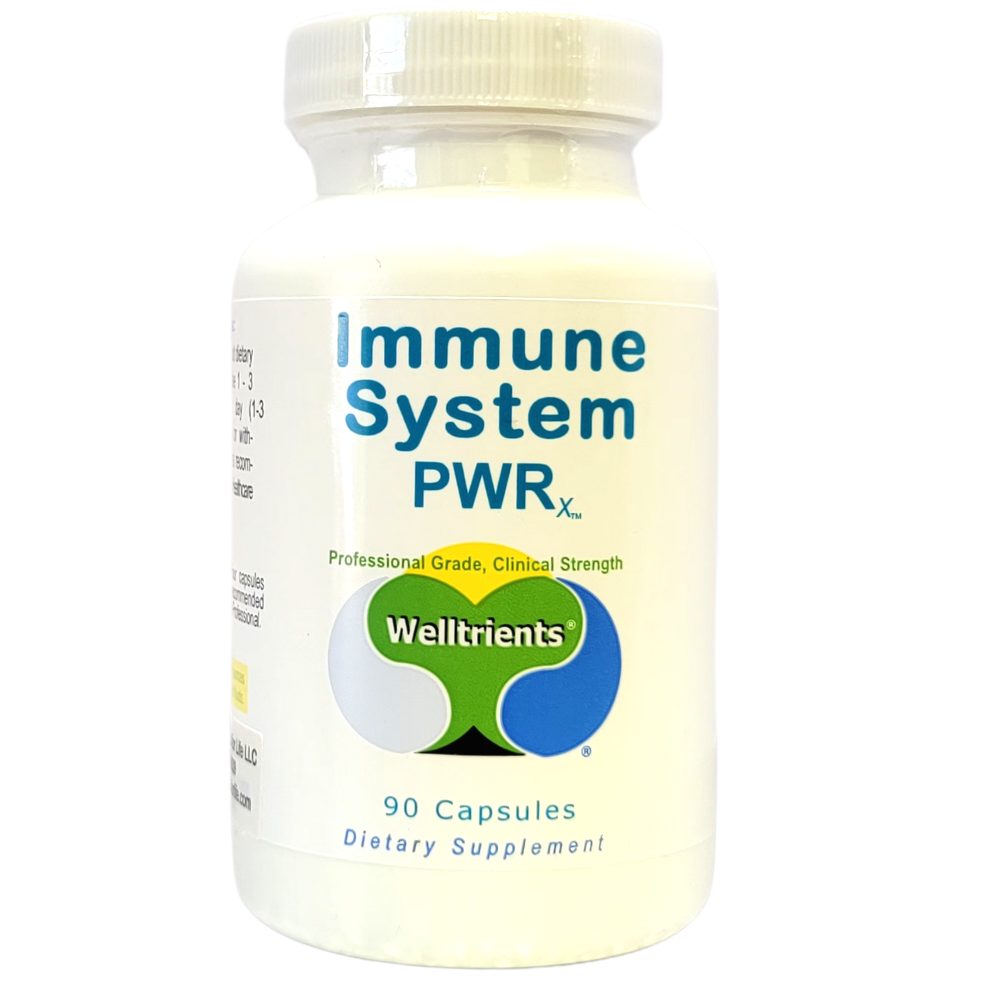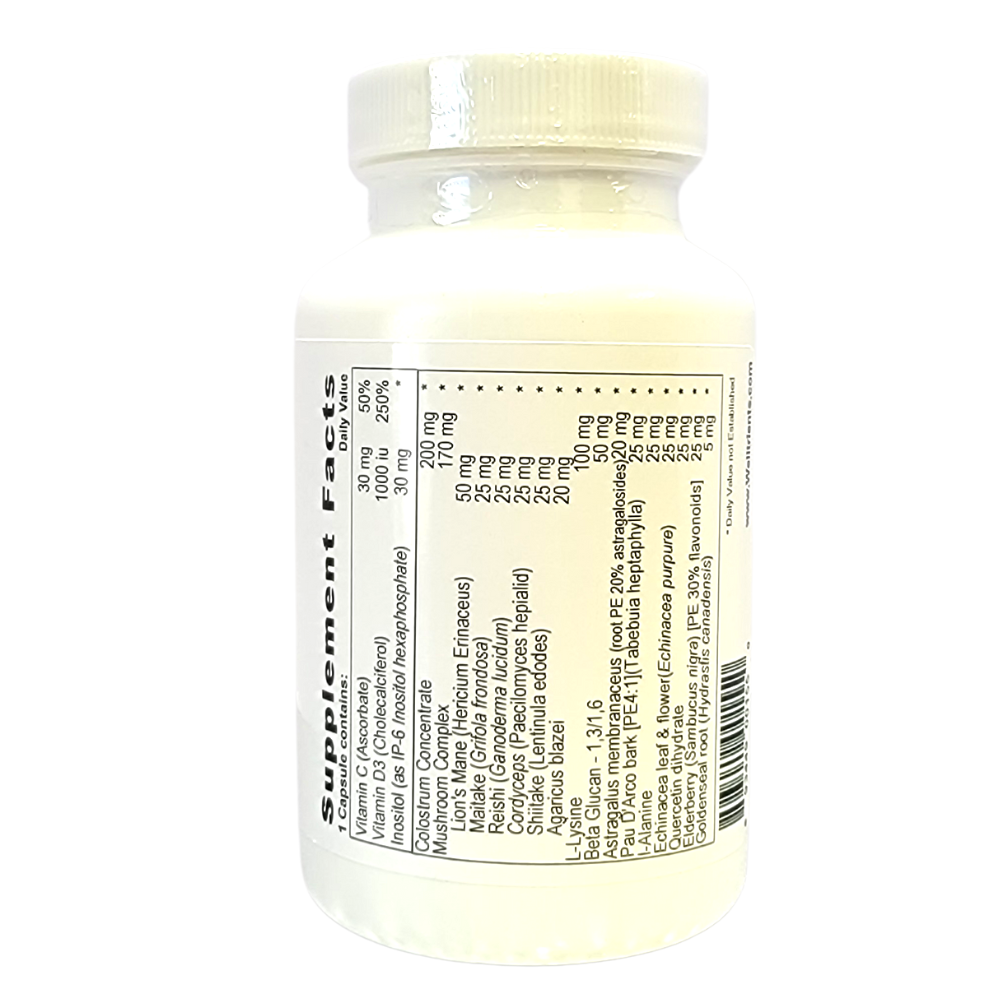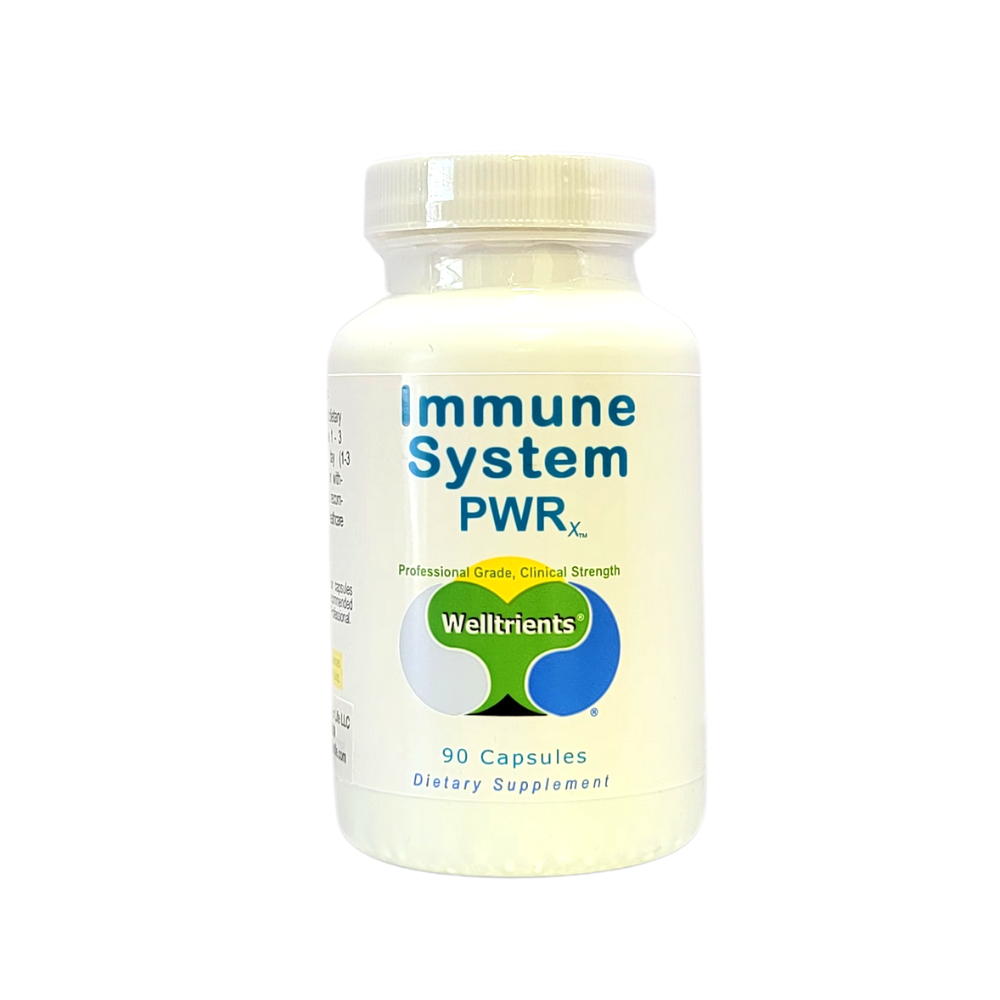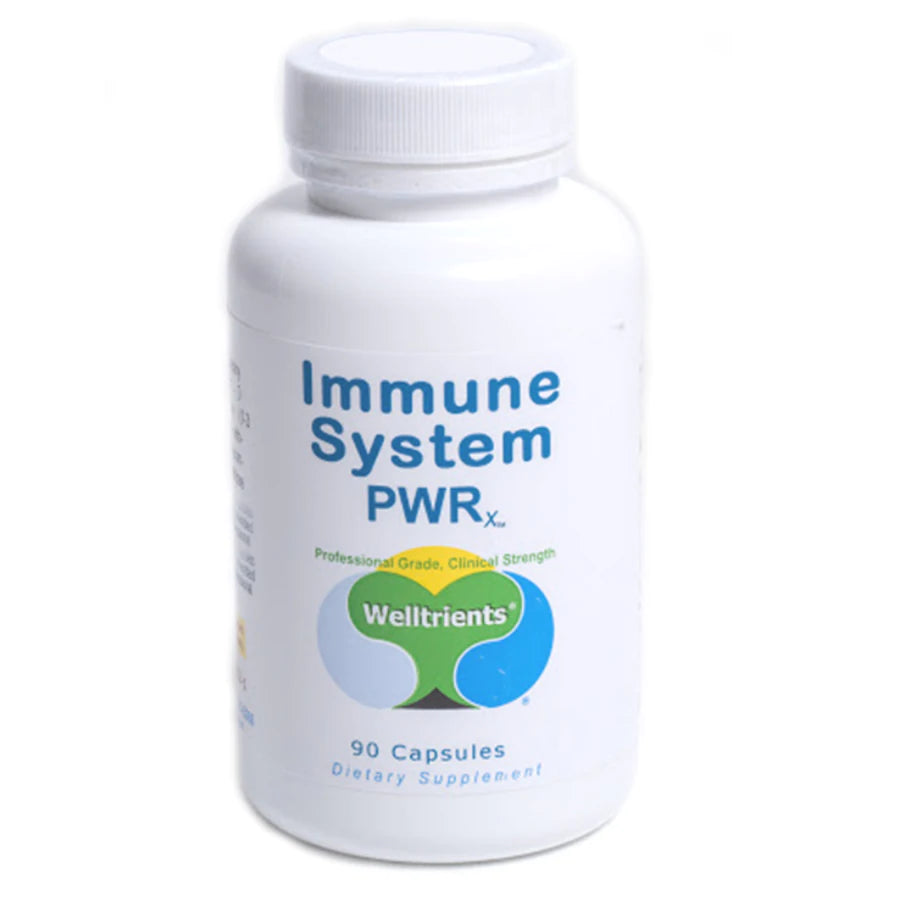Frequently Asked Questions about Immune System PWRx
Why Would You Use Immune System PWRx
How Does Immune System PWRx Work?
Directions for Use For Immune System PWRx
Ingredients For Immune System PWRx
Supplement Facts
Ingredients in 1 capsule:
| Vitamin C (Ascorbate/Ascorbyl Palmitate) | 90 mg | 150% |
| L-Arginine | 50 mg | * |
| L-Lysine | 50 mg | * |
| Elderberry extract (Sambucus nigra) [10:1] | 50 mg | * |
| Beta - 1,3-D Glucan | 50 mg | * |
| IP-6 (Inositol hexaphosphate) | 30 mg | * |
| Lion's Mane (Hericium Erinaceus) | 30 mg | * |
| Quercetin (Quercetin dihydrate) | 30 mg | * |
| Astragalus root extract (Astragalus plant) [10:1] | 30 mg | * |
| Shiitake | 25 mg | * |
| Reishi (Ganoderma lucidum) | 25 mg | * |
| Maitake (Grifola frondosa) | 25 mg | * |
| Cordyceps (Cordyceps militaris) | 25 mg | * |
| Echinacea leaf extract (Echinacea purpure) [4:1] | 25 mg | * |
| Agaricus (Agaricus blazei) | 20 mg | * |
| Goldenseal root (Hydrastis canadensis) | 5 mg | * |
| Vitamin D3 (Cholecalciferol) | 1,000 iu | 250% |
*Daily Value not established
About Colloids For Life
|
Colloids for Life LLC
Natural Supplements and Vitamins for Optimum Health
Colloids for Life LLC is dedicated to health and wellness, including offering top quality, natural supplements and encouraging a healthy lifestyle that includes good nutrition and exercise. For a variety of useful health tips as well as the latest health news, subscribe to our newsletter, sign up for our blog feed, like us on Facebook and/or follow us on Twitter.
Location Colloids for Life is located at: 7100 Broadway Bldg 2RS Denver CO 80221 |






















